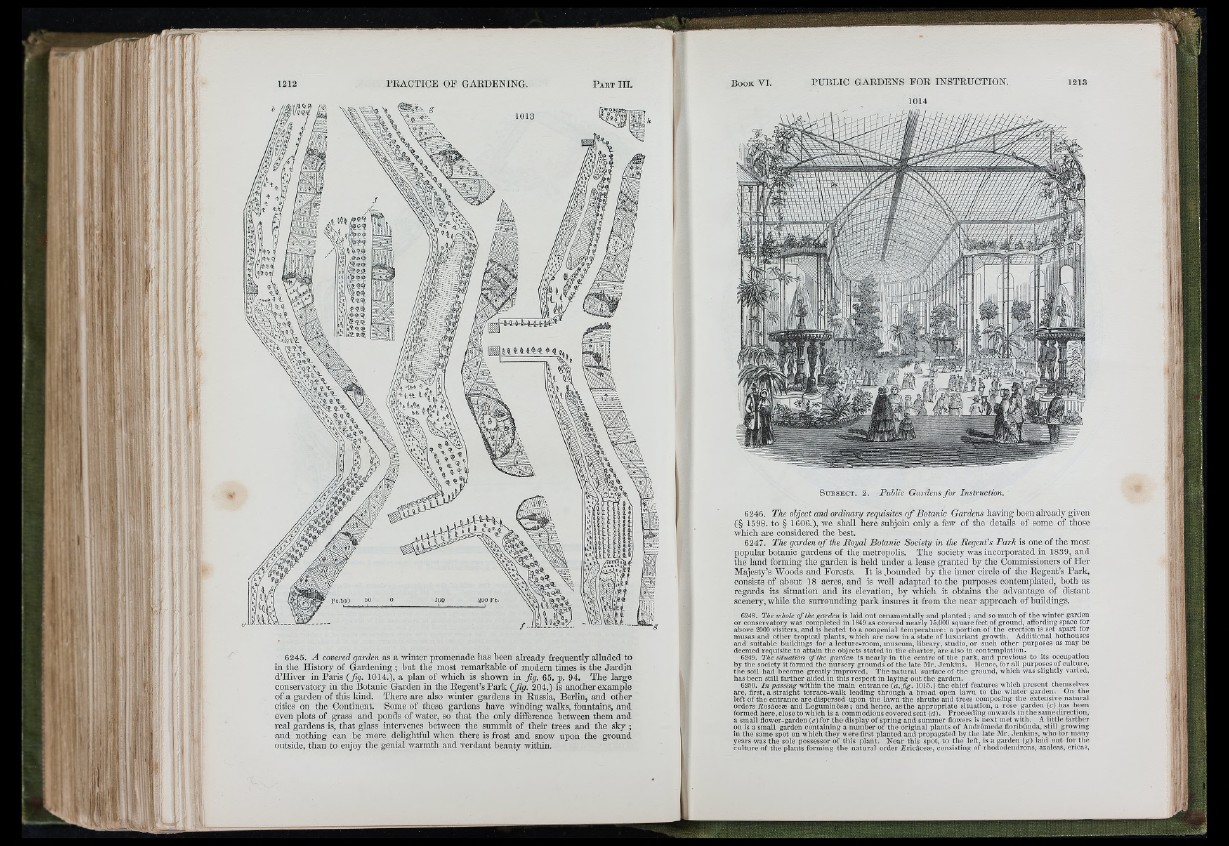
1014
S u b s e c t . 2 . Public Gardens fo r Instruction.
6246. The object and ordinary requisites o f Botanic Gardens having been already given
(§ 1598. to § 1606.), we shall here subjoin only a few of the details of some of those
which are considered the best.
6247. The garden o f the Royal Botanic Society in the Regent’s Park is onc of the most
popular botanic gardens of the metropolis. The society was incorporated in 1839, and
the land forming the garden is held under a lease granted by the Commissioners of Her
Majesty’s Woods and Forests. It is ^bounded by the inner circle of the Regent’s Park,
consists of about 18 acres, and is well adapted to the piu-poscs contemplated, hoth as
regards its situation and its elevation, by whicli it obtains the advantage of distant
scenery, while the suiTounding park insures it from the near approach of huildings.
6248. r/ie tt’Aofe is laid out ornamentally and planted; and so much of the winter garden
or conservatory was completed in 1849 as covered nearly 15,000 square feet of ground, affording space for
above 2000 visiters, and is heated to a congenial temperature: a portion of the erection is set apart for
musas and other tropical plants, which are now in a state of luxuriant growth. Additional hothouses
and suitable buildings for a lecture-room, museum, library, studio, or such other purposes as may be
deemed requisite to attain the objects stated in the charter, are also in contemplation.
6249. The situation ofthe garden is nearly in the centre of the park, and previous to its occupation
by the society it formed the nursery grounds of the late Mr. Jenkins. Hence, for all purposes of culture,
tlie soil had become greatly improved. The natura l surface of the ground, which was slightly varied,
has been still farther aided m this respect in laying out the garden.
62.50. I n passing within th e main entrance {a, fig. 1015.) the cliief features which present themselves
are, first, a straight terrace-walk leading through a broad open lawn to the winter garden. On the
left of the entrance are dispersed upon the lawn th e shrubs and trees composing the extensive natural
orders Fosaceae and Leguminbsae; and hence, as the appropriate situation, a rose garden (c) has been
formed here, close to which is a commodious covered seat (d). Proceeding onwards in the same direction,
a small flower-garden (e) for the display of spring and summer flowers is next met with. .A little farther
on is a small garden containing a number of th e original plants of Andromeda floribunda, still growing
in the same spot on which they were first planted and propagated by the late Mr. Jenkins, who for many
years w’as the sole possessor of this plant. Near this spot, to the left, is a garden (g) laid out for the
culture of the plants forming the natural order Fricacea?, consisting of rhododendrons, azaleas, ericas,